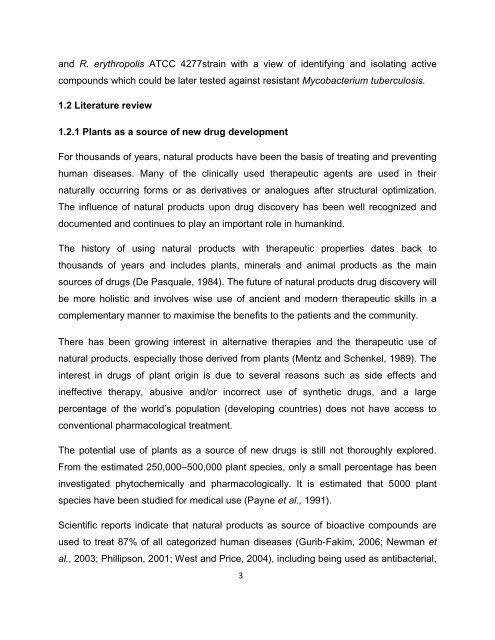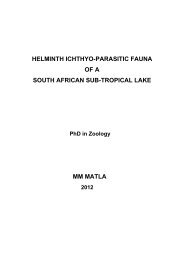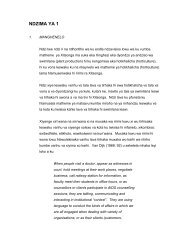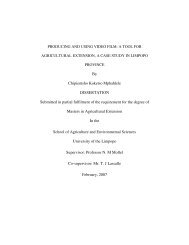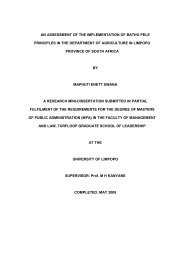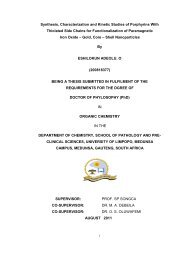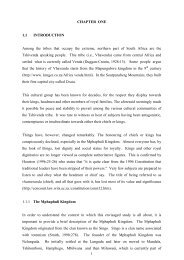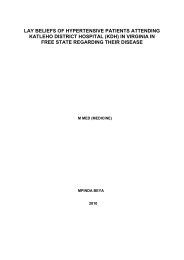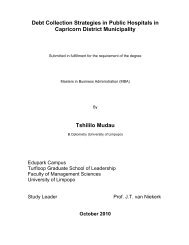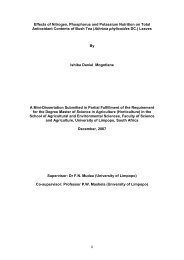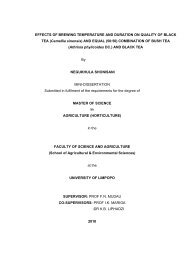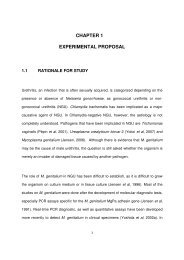Mmushi T MSc (Microbiology).pdf
Mmushi T MSc (Microbiology).pdf
Mmushi T MSc (Microbiology).pdf
Create successful ePaper yourself
Turn your PDF publications into a flip-book with our unique Google optimized e-Paper software.
and R. erythropolis ATCC 4277strain with a view of identifying and isolating active<br />
compounds which could be later tested against resistant Mycobacterium tuberculosis.<br />
1.2 Literature review<br />
1.2.1 Plants as a source of new drug development<br />
For thousands of years, natural products have been the basis of treating and preventing<br />
human diseases. Many of the clinically used therapeutic agents are used in their<br />
naturally occurring forms or as derivatives or analogues after structural optimization.<br />
The influence of natural products upon drug discovery has been well recognized and<br />
documented and continues to play an important role in humankind.<br />
The history of using natural products with therapeutic properties dates back to<br />
thousands of years and includes plants, minerals and animal products as the main<br />
sources of drugs (De Pasquale, 1984). The future of natural products drug discovery will<br />
be more holistic and involves wise use of ancient and modern therapeutic skills in a<br />
complementary manner to maximise the benefits to the patients and the community.<br />
There has been growing interest in alternative therapies and the therapeutic use of<br />
natural products, especially those derived from plants (Mentz and Schenkel, 1989). The<br />
interest in drugs of plant origin is due to several reasons such as side effects and<br />
ineffective therapy, abusive and/or incorrect use of synthetic drugs, and a large<br />
percentage of the world’s population (developing countries) does not have access to<br />
conventional pharmacological treatment.<br />
The potential use of plants as a source of new drugs is still not thoroughly explored.<br />
From the estimated 250,000–500,000 plant species, only a small percentage has been<br />
investigated phytochemically and pharmacologically. It is estimated that 5000 plant<br />
species have been studied for medical use (Payne et al., 1991).<br />
Scientific reports indicate that natural products as source of bioactive compounds are<br />
used to treat 87% of all categorized human diseases (Gurib-Fakim, 2006; Newman et<br />
al., 2003; Phillipson, 2001; West and Price, 2004), including being used as antibacterial,<br />
3


